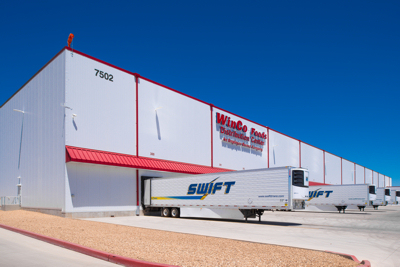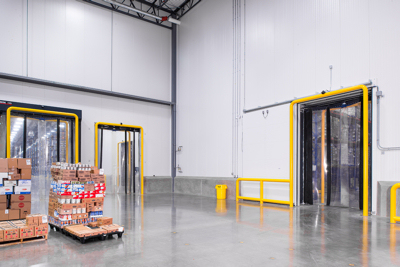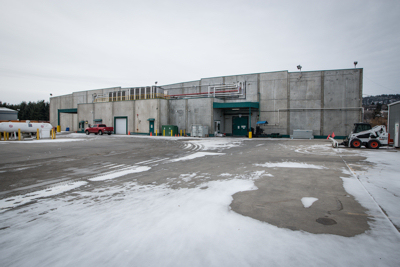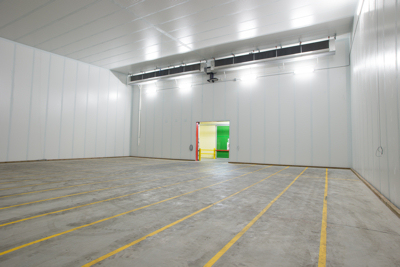 By Steve Mauro, Kingspan Insulated Panels
By Steve Mauro, Kingspan Insulated Panels
An ounce of prevention is worth a pound of cure. That philosophy forms the underlying foundation for current food safety regulations in the United States.
Refrigeration provides one of the most important preventative measures for protecting food products. At the same time, refrigeration presents a major challenge in the cold storage supply chain.
For manufacturers, distributors and retail venues, fluctuations in temperature by only a few degrees could cost hundreds of thousands of dollars in damages. Recently, one food manufacturer suffered estimated losses in the range of $250,000 in a one-week time period due to suspected temperature abuse.
The company also sustained damage to their brand identity. In an environment of instant information transfer, it didn't take long for websites, social media outlets and news organizations to spread word of the food safety issue.
Fortunately the situation involved no documented cases of illness. Imagine the repercussions if consumers had experienced widespread infection requiring medical attention. The legal ramifications could have been devastating.
 | |
 | |
Insulated metal panel systems are the product of choice for newly constructed food storage facilities, as shown in the Winco Foods project above. However, they've also proven to be an ideal solution for bringing antiquated storage buildings up to standard, as was the case with the BC Tree Fruits warehouse below. In both cases, insulated metal panel systems from Kingspan were utilized. | |
 | |
 | |
Maintaining the "Cold Chain" From Manufacturer to Consumer
Sanitary facility design must be prioritized during the design phase of any food processing, cold storage, or food preparation facility project. For refrigerated products such as meats, ready-to-eat foods, and produce—just to name a few—the risks due to temperature abuse could be great.
Industry research shows that a small rise in temperature in cold storage can facilitate increases in pathogen growth. More pathogens mean a greater food safety risk to the entire production line. Beyond food safety issues, storing refrigerated foods at improper temperatures can adversely affect product quality and taste.
The refrigerated food supply chain, or "cold chain" requires a great deal of planning and design to implement successfully.
Manufacturers must process and store product until shipped. Distributors find themselves dealing with cold storing product during transportation and on-the-dock redistribution. Risk of temperature abuse will arise again during unloading and storage at the retail outlet.
The smart facility designer must understand the intricacies of cold storage issues, and the threat they will pose to a functioning sanitary facility.
Reconciling Costs, Sanitary Facility Design, and the "Cold Chain"
Every capital investment decision requires careful consideration of economic factors.
The current down economy may influence decisions toward lower cost alternatives. Executives and other stakeholders should take into account associated risks and not just up-front expenditures. Selection of less expensive materials and equipment could save on construction costs, but increase long-term operational expenses and threats related to food safety.
Project stakeholders should consider factors such as HACCP requirements, accepted Good Manufacturing Practices, and Standard Operating procedures. Trade-offs of costs for quality don't always play out financially as first-planned.
As an example, wall or roofing panels made of cheaper porous surface materials could lead to pathogen growth. As a result, those panels may require more frequent cleaning with stronger more expensive cleaning agents—possibly requiring production line down time.
Cold storage doors on loading docks will act as gatekeepers. Does the door close automatically? How well does the loading-dock door control internal humidity on a rainy day? Do the cold storage wall panels offer air tightness to prevent moisture from accumulating in the building envelope?
Many issues exist that bolster risk for food safety failures. Cheaper alternatives can save on initial investment, only to cost more over the entire life cycle of the facility.
Sustainability Issues and a Food Safe "Cold Chain"
The need for constant refrigeration creates extensive energy needs for food safe facilities. Often times, secondary wants such as LEED certification or other sustainability goals get sacrificed for the sake of practicality.
The relationship between manufacturers and the USGBC has at times been contentious. Manufacturing and processing facilities rely heavily on energy and resource intensive processes. Attaining even minimal levels of LEED Certification can be arduous.
More manufacturers have chosen instead to focus on net-zero energy goals. Net-zero creates a more justifiable argument for investment, as decreasing energy usage directly correlates to reduction in ongoing expenses.
Whether facility owners seek LEED certification, a path to a net-zero energy building or a combination of both, goals will need to be addressed early in the design phase. Cost considerations will be a factor. Designers will need to work closely with project owners to align sustainability goals with ROI.